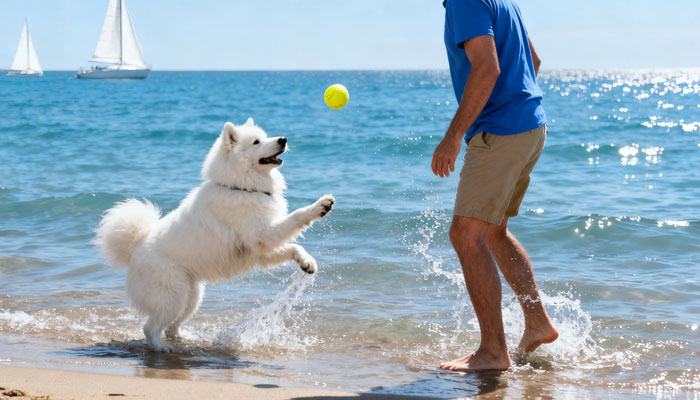Seize the optimal window for dog training
Many dog owners say their dogs are hard to train, but dog training actually has its own optimal golden period. Starting training during this prime time can make your efforts twice as effective with half the work! Today, let’s talk about when exactly this golden period for dog training falls.
1.Puppies under 3 months: Dog training is not recommended
Puppies under 3 months should not undergo dog training because their bones are still very fragile and prone to fractures. At this stage, puppies need proper nutrition to develop stronger, healthier bodies, laying a solid foundation for future training. However, note that besides fragile bones, their digestive systems are also delicate. Puppy food should be rich in nutrients and calcium, ideally containing probiotics to regulate digestion, protect gut health, and ensure the puppy is in optimal condition for future training!
2.3–6 Months: The Golden Period for Dog Training
When your dog reaches 3–6 months of age, this marks the prime time for dog training. At this stage, puppies are stronger and their bones are more solid. Owners can focus on intensive training during this period, such as basic commands (sit, shake hands, etc.) and potty training. Leveraging their strong learning ability at this stage, puppies will pick up commands quickly, significantly boosting training efficiency.
3.Key Techniques for Dog Training: Consistent Commands and Specialized Training
When training your dog, commands must be simple, clear, and concise, and should never be changed frequently. Frequent command changes confuse dogs, leaving them unsure which instruction to follow and severely hindering training progress. Therefore, commands must remain consistent. Additionally, once the dog reaches 4 months old, owners can begin targeted socialization training (exposure to other people and animals) and food refusal training. These are crucial components of dog training, effectively preventing accidental poisoning from scavenging or being lured away, making the training more practical.
4.Principles of Dog Training: Clear Rewards and Punishments, Rejecting Violence
Dog training must be conducted with clear rewards and consequences. When the dog performs well, promptly offer rewards. These can be treats (like chicken jerky), verbal encouragement (“Good boy/girl!”), or praise through petting. Such positive reinforcement makes the dog enjoy training more and become more cooperative. However, keep each training session brief—around 15 minutes—to prevent fatigue and resistance.
Mistakes or unmet expectations are inevitable during training. Crucially, never resort to violence. Violence instills fear in dogs, potentially making them reluctant or even fearful of training later on, which only increases the difficulty. In reality, with a little more patience from the owner and repeating the actions and commands a few times, dogs can usually learn. This allows dog training to progress smoothly in a friendly atmosphere.
admin
-
Sale!

Washable Pet Cooling Pad for Cats and Dogs
$10.99Original price was: $10.99.$9.99Current price is: $9.99. This product has multiple variants. The options may be chosen on the product page -
Sale!

Washable Cat Window Hammock Cooling Bed
$23.99Original price was: $23.99.$22.99Current price is: $22.99. -
Sale!

Tropical Amphibian Rainforest Tank, Lizard Cage
$38.99Original price was: $38.99.$36.99Current price is: $36.99. -
Sale!

Silent 4-in-1 Waterproof Charging Dog Hair Trimmer
$49.88Original price was: $49.88.$47.99Current price is: $47.99.
